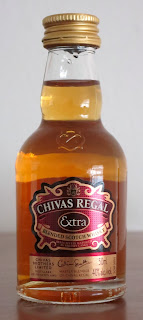When people bemoan how much whisky has changed over the last few decades, one of the points that often comes up is that modern spirits aren't as complex as they used to be. This raises two important questions - how much have they actually changed and how much is driven by changing tastes?
The mostly commonly cited factor for why spirits used to be more complex than they are today is
 |
| A decidedly uncontrolled washback at Springbank |
production methods. What most of them come down to is less control - more fallible humans operating maltings, washbacks, and stills, strains of barley less optimized for yield, more floor maltings, longer fermentation times in wooden washbacks, direct fired stills (especially if they were heated with coal) instead of steam coils, stillmen making cuts by feel, more dunnage than racked warehouses, etc. Compared to modern methods that have relentlessly focused on increasing yield and consistency, older methods were more prone to mistakes - floor maltings could operate at the wrong temperature or turn the germinating barley at the wrong time, insufficiently clean washbacks could introduce bacterial infections into the wash, direct fired stills could burn the wash and create off flavors, and improperly timed cuts could let heads or tails into the hearts.
To
quote Bill Lumsden of Glenmorangie and Ardbeg and Ed Dodson of Glen Moray:
"The ‘good old days’: ‘A large proportion of the whisky made 30, 40 and more years ago was horribly inconsistent… Ed Dodson, the former distillery manager at Glen Moray, laughs and says: “Bill, you know, the reason we closed the floor maltings down was because the malt we made was [crap], because we couldn’t do it properly, we just didn’t have the facilities to do it.” The whisky was all over the place.’"
At the same time that variability could occasionally come together to produce accidental brilliance - uncontrollable factors that made a uniquely good cask or batch that would be less likely to happen in today's far more controlled environment. This creates a trade-off - we're less likely to drink overtly flawed whisky now because there are fewer dud casks, but there are fewer of the soaring accidents of yesteryear.
With all that said, there is nothing stopping modern distilleries from reverting back to previously used production methods. Many distilleries retain these kinds of features - floor maltings, worm tub condensers, direct-fired stills, and the like. There were
rumbles a few years ago that Ardbeg might rebuild its floor maltings, which have been silent since the early 1980s, but it appears that the powers that be decided not to greenlight the project. All of this suggests that distillers do not believe that the costs of less efficient production will be offset by increased sales of higher quality products.
If anything, the malts that have become popular over the last decade suggest that less rather more complexity is what many drinkers want. In 2008 Bruichladdich kicked off the Peat Wars with
Octomore, which featured higher phenolic PPMs in the malted barley used to make the whisky than anything that had come before. Ardbeg responded with
Supernova in 2009, which, while somewhat more modestly peated than Octomore, more than held its own. Since then an increasing number of distilleries have released heavily peated whiskies, often following in the footsteps of Octomore and Supernova by being NAS and likely young, thus retaining more of the peatiness that drinkers are looking for. While these whiskies can be good in their own terms, I have joked that the only way for them to push the envelope would be for the next release to be a ticket to Islay where someone would shove your face into a peat bog.
We have seen similar trends when it comes to sherry maturation. While it is unquestionable that many of the whiskies that led this trend, including Aberlour A'Bunadh, Glenfarclas 105, and Macallan Cask Strength, were and often are quite good, the singular focus seems to have led to increasingly unidimensional whiskies. They are bombastic and often enjoyable, but the combination of more and more first-fill sherry casks coupled with increasing youthfulness as stocks are strained means that they often end up being little more than high-proof sherry, with much of what we think of as malt whisky character subsumed by the wine. I think this can also be seen in the rapturous praise that is heaped on extremely dark whiskies that have not been colored with spirit caramel, as many believe this suggests a particularly active sherry cask. In my
own experience these are often too sherried, with little else to recommend them.
My personal feeling is that the decreases in complexity are driven by both of these factors. Tighter stocks and more consistent production methods have decreased the scope for complexity, leading to few complex whiskies available on the market. At the same time, the influx of new drinkers has brought in many people who are looking for bold, comparatively simple flavor profiles, which has encouraged producers to cater to those tastes. While this is good for distillers, who can now move younger whisky more easily and a happy coincidence for the drinkers who enjoy those spirits, it leaves the people who are looking more more complex, subtle spirits in a bind without clear solutions.
 Glengoyne 10 Year
Glengoyne 10 Year




